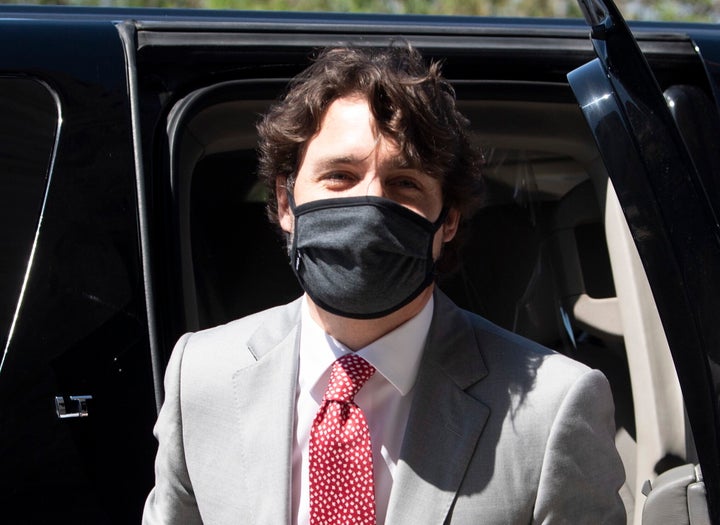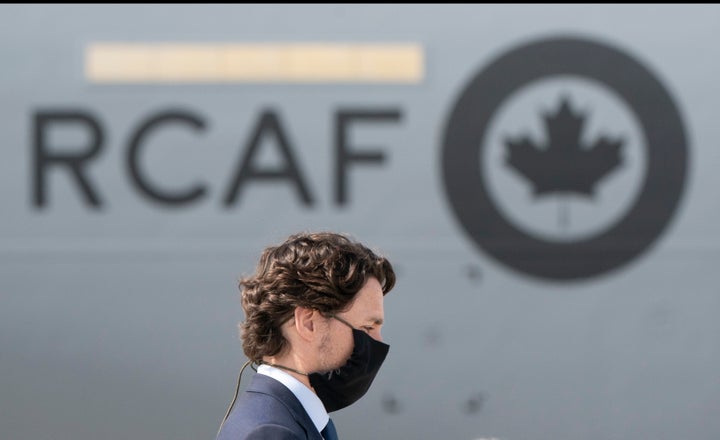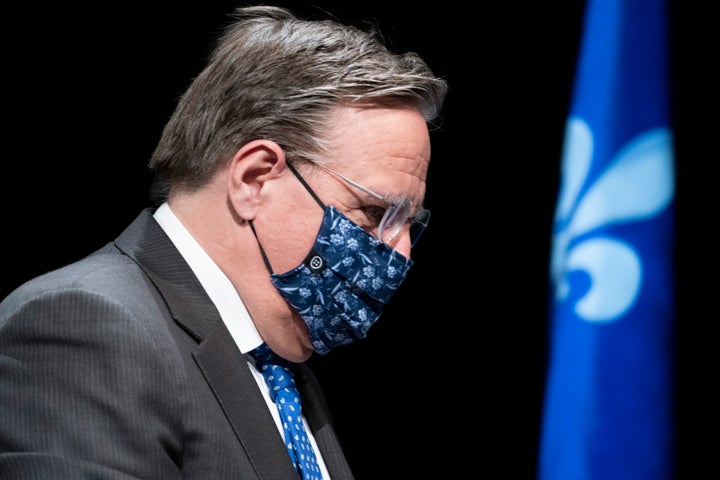
Prime Minister Justin Trudeau says he will wear a mask in public when he cannot keep two metres of distance from others, a step that the country’s top doctor now recommends Canadians embrace.
Speaking to reporters in Ottawa Wednesday, Trudeau called it a “personal choice” that is in line with advice from public health experts. Still, keeping socially distant, staying home when sick, and washing one’s hands remain “the best thing” for Canadians to keep doing to stem the spread of COVID-19, he said.
“But in situations where you cannot physically distance to two metres… people are encouraged to wear masks,” he said.
Watch: Trudeau says Canada won’t pay for sub-standard medical masks
Trudeau said he chose to start wearing a face-covering when he comes into closer proximity with people, be it walking the halls of Parliament or heading to his office. The prime minister said he would wear a mask into the House of Commons Wednesday for the in-person sitting of a special COVID-19 committee.
“Once I am at my desk in Parliament and two metres separate from everyone else, I will take off my mask so I can engage in parliamentary discourse. But as soon as I leave my seat and walk past people, and walk through potentially busier hallways, I will be wearing a mask,” he said.
“That is my personal choice. That is aligned, I think, with what public health is recommending. I think we all need to adjust to what works in our circumstances and keep safety at the forefront of what we are doing.”
The prime minister, Gov. Gen. Julie Payette, and military personnel wore masks earlier this month at the repatriation ceremony for the six Canadian Armed Forces members who died in a helicopter crash off the coast of Greece.

Dr. Theresa Tam, Canada’s chief public health officer, later told reporters in Ottawa that the use of non-medical masks is recommended as “an added layer of protection when physical distancing is difficult to maintain.”
Tam said much the same last month, suggesting she’d wear a mask in circumstances where she wasn’t confident there would be adequate physical distancing, such as at a grocery store. She said Wednesday that her earlier language on the issue was more “permissive.”
Masks are about protecting others rather than oneself, Tam stressed. “If two people are wearing masks, I am protecting you, and you are protecting me,” she said.
Tam said a full explanation of the new recommendation will be published later Wednesday by the national special advisory committee on COVID-19.
Federal officials were not making wearing a mask obligatory, she said, because the situation differs greatly across the country. Provincial medical officers of health would give out local advice based on local conditions, she said, noting that the circumstances in Toronto and Montreal, where there has been community transmission, does not compare to the Yukon or Prince Edward Island, where the risk of catching the novel coronavirus is much lower.
Ontario Health Minister Christine Elliott, whose province issued the same mask- wearing advice Wednesday, said health recommendations on masks have changed as the province moves to gradually reopen its economy.
“More people will be outdoors and outside and there may be situations where they cannot maintain the physical distance, which continues to be the golden rule, the two metres, the six feet, for people to stay apart,” she said. “But, we recognized, with public transit for example, that may not be possible.”
Last week, Quebec Premier François Legault asked residents in his province to wear a mask when they leave their homes.
“When you take the bus, or the subway, or when you are in a situation where you cannot necessarily maintain [two metre distance], for example in a store… it’s best to have a mask,” he said.

Legault wore a mask at the beginning of his press conference to stress the point, but he was criticized for not taking it off properly.
Tam and her deputy, Dr. Howard Njoo, said people should wash or sanitize their hands before putting their mask on and after taking it off. They should avoid touching the external side of the mask, and avoid touching their face, as the virus enters through the eyes, nose, and mouth.
As people shop from one store to another, Tam recommends carrying a Ziploc bag in which they can put their mask. And, of course, masks should not be shared between individuals, or touched by another person.
“It’s your own secretions, keep it to yourself, and wash your hands really well,” she said.
Risk of catching virus outdoors much lower than indoors: Tam
For those concerned about jogging in public or holding backyard BBQs with their friends, Tam did not recommend the wearing of a mask. She said the risk of catching the virus outdoors is much lower than indoors.
The federal government has a tip sheet on masks. Tam said cloth masks should be made of different layers of cotton, tightly woven so light doesn’t shine through. She also noted the importance of fit, saying wearers should ensure there are no gaping holes on the side of their mask.
Njoo suggested it could become normal to see people outside wearing masks, as is the practice in some Asian countries. “Maybe once this pandemic is over,” he said, “it will become something normal for people to wear masks when they leave the house.”
With a file from The Canadian Press